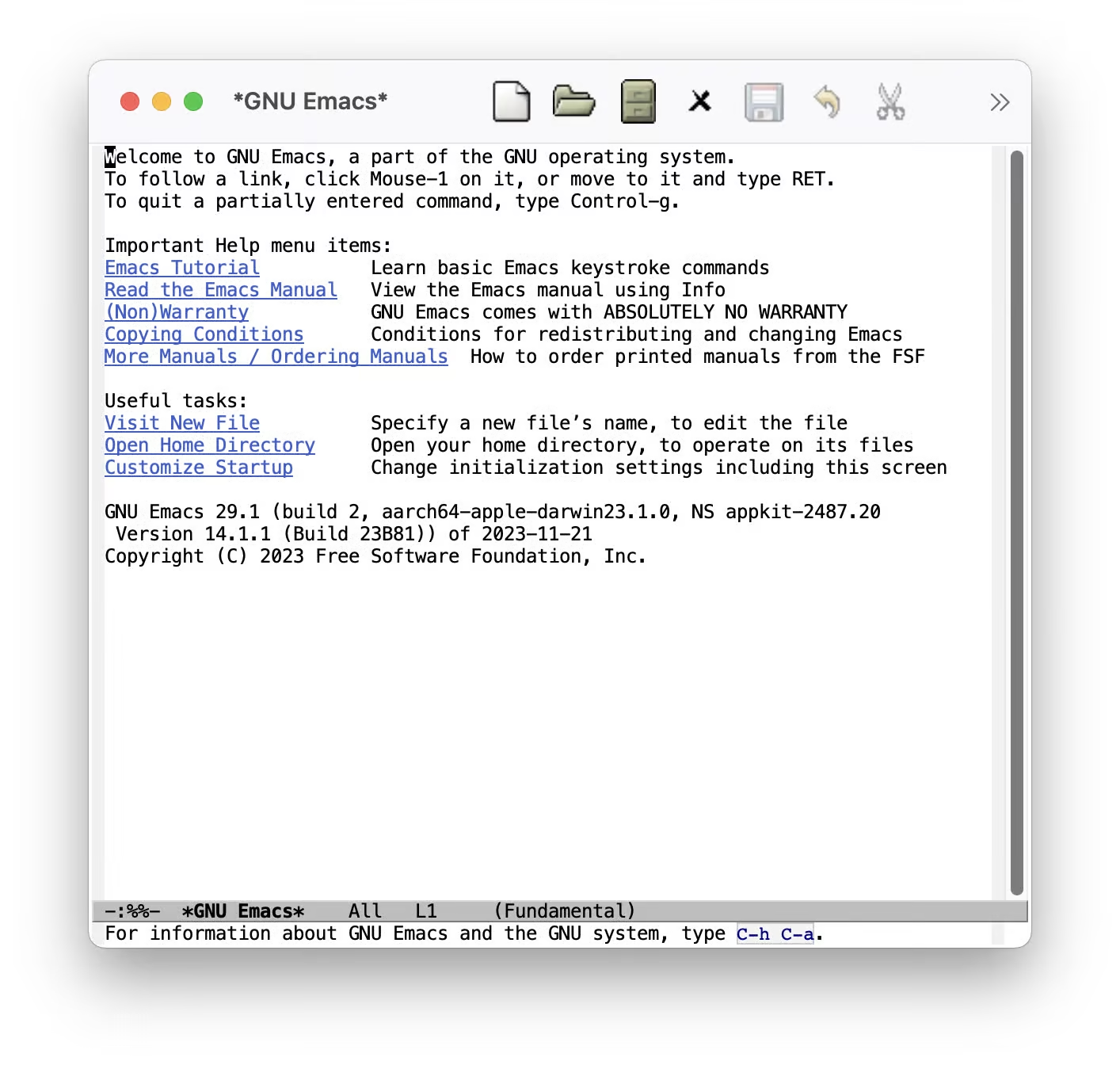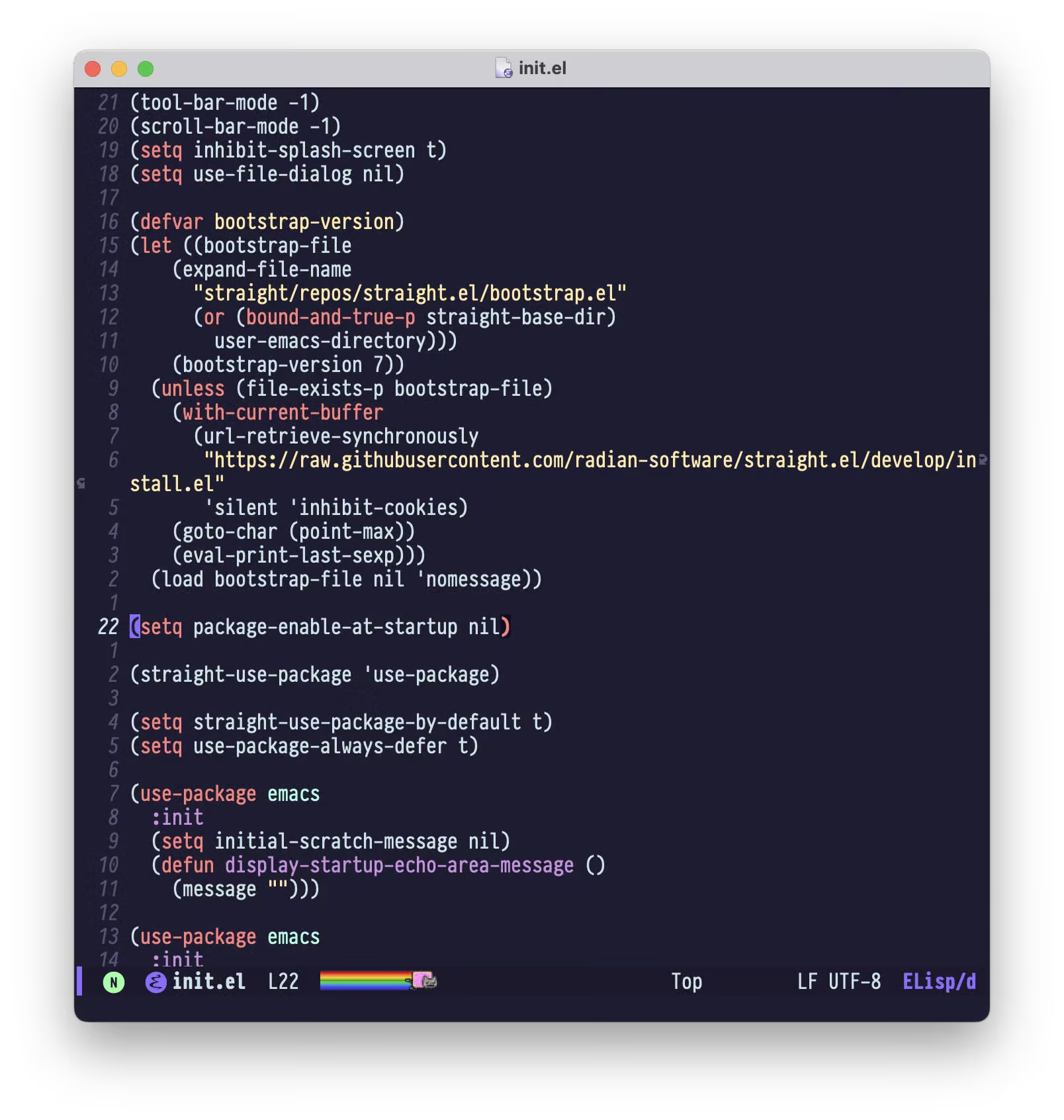Emacs Config From Scratch, Part 1: Foundations
The first post of my Emacs from Scratch series is all about the initial setup and defaults. · Frankfurt, GermanyWelcome to my new series Emacs From Scratch. I’m far from an Emacs expert, so join me in my quest to figure out how to create a useful Emacs setup from nothing1.
In this part, we’ll install Emacs, set up sane defaults, packaging and do some basic UI tweaks to build a solid foundation.
Table of Contents
- Install Emacs
- Remove UI elements
- Configure the package manager
- Set sane defaults
- Become evil
- Set font and theme
- Add a nicer modeline
- Conclusion
Install Emacs
On macOS, everyone recommends Emacs Plus. For other systems, check out Doom’s Emacs & dependencies documentation.
We’re running this command:
And this is what it looks like when we start Emacs for the first time:

Remove UI elements
We want to remove everything but the text. To do so, we first create a file in
$HOME/.emacs.d/init.el.
; Hide the outdated icons
; Hide the always-visible scrollbar
; Remove the "Welcome to GNU Emacs" splash screen
; Ask for textual confirmation instead of GUI
If you start Emacs now, you’ll see the GUI elements for a few milliseconds.
Let’s fix that by adding these lines to $HOME/.emacs.d/early-init.el2:
This is better:

We’ll take care of the default scratch text and the C-h C-a hint down below.
Configure the package manager
We’ll be using straight.el
for package management.
This is the installation code from the straight.el README:
The docs also recommend adding this to our early-init.el to prevent
package.el from loading:
Next we’ll install use-package for tidier specification and better performance:
Then we’ll make use-package use straight.el by default and always :defer t
for lazy loading:
Set sane defaults
It’s good practice to specify Emacs-specific settings in a use-package block,
even though this doesn’t change anything functionally.
In the following, I’ll repeat the use-package emacs function, but you can,
and probably should, move these all into a single use-package block.
Let’s start without the default scratch message and the text at the
bottom saying “For information about GNU Emacs and the GNU system, type
C-h C-a”:
In confirmation dialogs, we want to be able to type y and n instead of
having to spell the whole words:
Make everything use UTF-8:
Use spaces, but configure tab-width for modes that use tabs (looking at you, Go):
Map the correct keybindings for macOS:
Become evil
I’m used to Vim keybindings and want to keep them, so we’ll use evil:
Set font and theme
We’ll be using the PragmataPro typeface:
For themes, I can recommend the
Doom Themes, we’ll be using
doom-challenger-deep3:
Finally, we want relative line numbers in prog mode:
Add a nicer modeline
We’ll install doom-modeline:
For pretty icons, we need to install nerd-icons as well:
After restarting Emacs, run M-x nerd-icons-install-fonts (Option-x on
macOS) to install the icon font.
And we’ll install Nyan Mode, a minor mode which shows a Nyan Cat (which is 12 years old at the point of writing this) in your modeline to indicate position in the open buffer.
Conclusion
This is what looks like:

We have sane defaults, we can open a file with :e, navigate around and we
have a nice color scheme4 and modeline.
Here’s the the final init.el
and early-init.el
In part 2, we’ll add a project manager, our own keybindings, the best Git TUI, a handy shortcut to restart Emacs and a ton of small tweaks.
Subscribe to the RSS Feed so you don’t miss the following parts, and let me know if I missed anything foundational!
-
If you don’t want to have to configure everything and just want an editor that, works,
use VS Codecheck out Doom Emacs. ↩ -
early-init.elis loaded during startup, see The Early Init File. Unless explicitly noted, configuration should go ininit.el. ↩ -
Derived from the incredible original ↩
-
Yes, I know that’s what they’re called in Vim. ↩